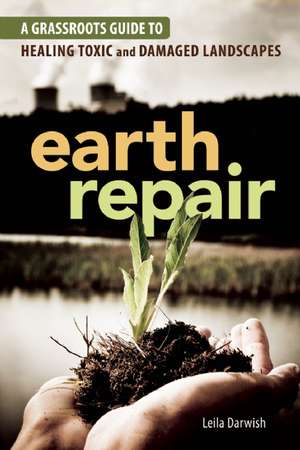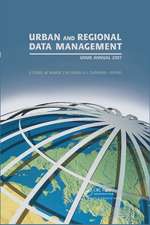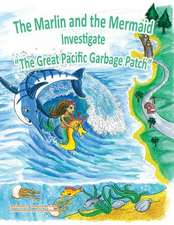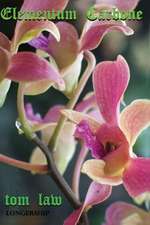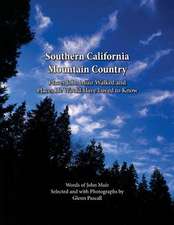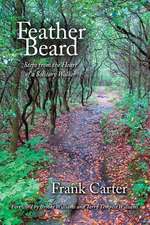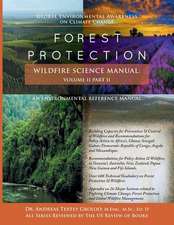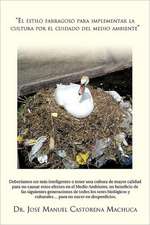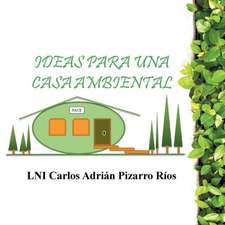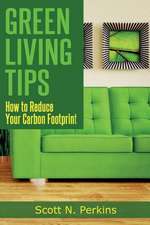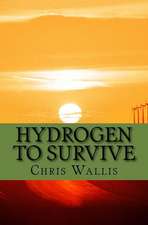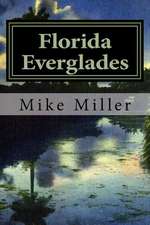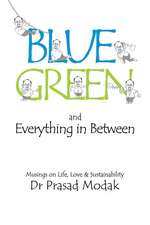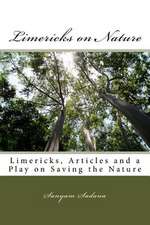Earth Repair
Autor Leila Darwishen Limba Engleză Paperback – 31 mai 2013
Earth Repair describes a host of powerful grassroots bioremediation techniques, including:
- Microbial remediation—using microorganisms to break down and bind contaminants
- Phytoremediation—using plants to extract, bind, and transform toxins
- Mycoremediation—using fungi to clean up contaminated soil and water
Leila Darwish is a community organizer, urban gardener, and permaculture designer with a focus on using grassroots bioremediation to address environmental justice issues in communities struggling with toxic contamination of their land and drinking water.
Preț: 150.18 lei
Nou
28.75€ • 31.24$ • 24.16£
Carte disponibilă
Livrare economică 31 martie-14 aprilie
Livrare express 14-20 martie pentru 31.47 lei
Specificații
ISBN-10: 086571729X
Pagini: 326
Ilustrații: 50 B&W photographs and illustrations
Dimensiuni: 152 x 226 x 20 mm
Greutate: 0.52 kg
Editura: New Society Publishers
Locul publicării:Canada
Recenzii
—David Holmgren, co-originator of permaculture and author, Permaculture: Principles and Pathways Beyond Sustainability
Earth Repair, what a brilliant and useful book! Leila Darwish & New Society have brought forth a book for people who will not wait around to heal the world. With a broad and deep view of the historical dynamics of thoughtless upheaval and waste, Earth Repair provides thorough, local-action strategies that communities, with or without resources, can undertake to remediate their damaged landscapes. In accessible language, this book explains how to deal with a serious local issue while also shining light on where to go to deal with the source!
—Mark Lakeman, cofounder, The City Repair Project, communitecture, and the Planet Repair Institute
Earth Repair is a fantastic introduction to grassroots bioremediation — an indispensible guide for citizen scientists, permaculturists, and ecological justice activists wanting to proactively address the legacy of environmental pollution which we’ve inherited from our industrial civilization. Within is a highly accessible toolkit of techniques and skills usable by the average person, empowering them to safely destroy or immobilize common contaminants by partnering with familiar biological allies such as microbes, worms, fungi, and plants. As we transition into a sustainable society, this book will be a key text, critical for informing communities in the process of de-toxifying our planet.
—Scott Kellogg, educational director of the Radix Ecological Sustainability Center and author,Toolbox for Sustainable City Living – A Do-It-Ourselves Guide.
We are an odd, almost unique, creature that soils its own nest. As we’ve become more industrially and technologically muscular, our soiling has penetrated into the heart of Earth’s systems, where we now pile our filth upon genetics, delicate geochemical balances, and climate. We have destabilized nature, and we won’t find a way out the same way we came in. Darwish’s good news is that nature WANTS to heal, and even knows how. We just have to use the tools she gives us.
—Albert Bates, author, The Post-Petroleum Survival Guide and Biochar: Carbon Farming and Climate Change
Notă biografică
Textul de pe ultima copertă
David Holmgren, author of Permaculture: Principles and Pathways Beyond Sustainability
…a book for people who will not wait around to heal the world.
Mark Lakeman, co-founder of The City Repair Project, communitecture, and the Planet Repair Institute
From urban lots contaminated with heavy metals and chemicals to polluted waterways and devastating oil spills, our toxic industrial legacy impacts our environment, our health, and our ability to create healthy, thriving local foodsheds. Conventional clean-up techniques employed by government and industry are expensive and resource-intensive and can cause further damage to the ecosystem. As the incidence of contamination and pollution continues to spread, communities are increasingly unable to rely on those who created the problems to
step in and provide effective solutions that work for people and the planet.
Earth Repair explores a host of powerful grassroots bioremediation techniques that work with the many microorganisms, mushrooms, and plants that are the planet’s finest and oldest disaster responders, alchemists, and healers. These techniques include:
Microbial remediation – using microorganisms to break down and bind contaminants
Phytoremediation – using plants to extract, bind and transform toxins
Mycoremediation – using fungi to clean up contaminated soil and water.
Packed with valuable firsthand information from visionaries in the field, Earth Repair is essential reading that will empower communities and individuals with tools to transform environmental despair into constructive action.
… an indispensable guide for citizen scientists, permaculturists and ecological justice activists wanting to proactively address the legacy of environmental pollution we’ve inherited from our industrial civilization.
Scott Kellogg, educational director of the Radix Ecological Sustainability Center and author of Toolbox for Sustainable City Living: A Do-It-Ourselves Guide
Leila Darwish is a community organizer, urban gardener and permaculture rabble rouser, with a deep commitment to environmental justice, food security, and providing accessible and transformative tools for communities struggling with toxic contamination of their land and drinking water.
Cuprins
Many Thanks
Introduction: Manualfesto
Chapter 1: Roots of Repair: Decolonization and Environmental Justice
Chapter 2: Earth Repair and Grassroots Bioremediation
Chapter 3: Getting Started
Chapter 4: Microbial Remediation
Chapter 5: Phytoremediation
Chapter 6: Mycoremediation
Chapter 7: The Art of Healing Water
Chapter 8: Oil Spills I: The Anatomy of an Environmental Disaster
Chapter 9: Oil Spills II: Tools for the Grassroots Bioremediator
Chapter 10: Nuclear Energy and Remediating Radiation
Chapter 11: Self-Care for Grassroots Remediators, Community Members and Disaster Responders
Conclusion: Final Words for a Fertile Way Forward
Appendix 1: Contaminants 101
Appendix 2: Conventional Remediation Techniques
Appendix 3: Metric Conversion Table
Endnotes
Index
About the Author
